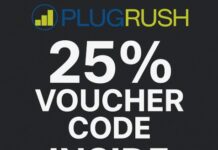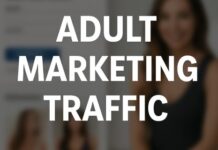There is a long-standing idea in marketing that a customer needs to see a message about seven times before they decide to act. As explained by the University of Maryland, this concept, known as the Rule of 7, highlights why your choice of ad format is so important for every one of those interactions. Think of it like deciding how to send a message to a friend. A quick text is great for an urgent update, an email works for sharing details, and a formal letter is for something serious. Each format creates a different feeling and gets a different response.
Choosing the right ad format helps you grab the attention of the right people, which leads to better engagement and a stronger return on your investment. The wrong format, however, can feel like shouting in a library. It might annoy potential customers and waste your budget. This guide will give you a clear path on how to choose ad formats that work for you. We will look at common digital ad formats for beginners, show you how to match them to your campaign goals, and share simple tips for testing what works best.
A Breakdown of Common Ad Formats
Before you can pick the right tool for the job, you need to know what is in your toolbox. Digital advertising offers several formats, each with its own strengths. Understanding the basics will help you make a much more informed decision for your campaigns.
Banner Ads: The Digital Billboards
You have seen these everywhere. Banner ads are the visual advertisements that appear at the top, bottom, or sides of websites. Like billboards on a highway, their main job is to build brand awareness. They keep your logo and message in front of people as they browse the web. Banners can be simple static images or eye-catching animations, making them a flexible choice for getting your name out there.
Popunder Ads: The Uninterrupted Message
If you have ever wondered what are popunder ads, they are advertisements that open in a new browser window hidden behind the one you are currently viewing. Their power comes from this subtlety. Instead of interrupting what a user is doing, the ad waits patiently. When the user closes their main window, your landing page is there, ready to capture their full attention. This method is particularly effective for generating a high volume of clicks, and you can learn more about the specifics of popunder traffic to see if it fits your goals.
Push Notification Ads: The Direct Alert
Push notification ads are short, clickable messages that appear on a user’s computer or mobile device, much like a text message alert. The key here is permission. Users have to agree to receive these notifications, which means you are reaching an audience that is already interested in what you have to say. This makes them perfect for time-sensitive offers, news updates, or reminders that bring users back to your site.
Other Notable Formats to Know
Beyond these main types, you will also encounter video ads, which are great for telling a story, and native ads, which are designed to blend in with the surrounding content. Because they look like part of the website, native ads can be very powerful. If you are curious about how they compare to other formats, exploring native advertising vs. popunder ads can provide more insight. With so many options available, you can find and buy traffic that perfectly matches the format you choose.
Matching Ad Formats to Your Campaign Goals
Now that you know the different types of ads, the next step is to connect them to what you want to achieve. Your campaign goal should always guide your decision. Are you trying to introduce your brand to new people, or are you looking to make immediate sales? The answer will point you toward the best format.
For example, a campaign focused on brand awareness has very different needs than one focused on generating leads. The banner vs push ads debate is a perfect illustration. Banners are excellent for keeping your brand visible to a wide audience over time, while push ads are designed to trigger an immediate action from a user who has already shown interest. The table below offers a simple guide to help you align your goals with the right ad formats.
| Campaign Goal | Recommended Ad Format(s) | Why It Works | Example Use Case |
|---|---|---|---|
| Building Brand Awareness | Banner Ads | Keeps your brand visually present and top-of-mind for a broad audience. | A new online coffee shop running banners on food blogs. |
| Generating Leads | Push Notifications | Reaches an audience that has already opted-in and is receptive to your offers. | A financial services site sending an alert for a free webinar sign-up. |
| Driving High-Volume Traffic | Popunder Ads | Captures full attention and sends a large number of users directly to a landing page. | Promoting a new game or entertainment website. |
| Driving Direct Sales | Popunders, Push Notifications | Creates urgency for limited-time offers and encourages immediate action. | An e-commerce store announcing a 24-hour flash sale. |
| Promoting Content or Apps | Native Ads, Banners | Fits naturally into a user’s reading flow or provides a clear visual prompt to download. | A tech blog promoting a new guide or a mobile game advertising for installs. |
Considering Your Industry and Audience
Choosing the right ad format is not just about your goals. It also depends on your industry and who you are trying to reach. An ad that works wonders for an e-commerce store might fall flat for a business-to-business service provider. Context is everything.
Think about your audience. A younger, mobile-first crowd might be more responsive to interactive formats like push notifications for a flash sale on sneakers. On the other hand, a professional looking for software solutions might prefer a less intrusive banner ad on a trusted industry news site. Visual industries like fashion, travel, or food can get great results from beautiful banner ads that showcase their products. In contrast, time-sensitive industries like finance or online retail can use the urgency of push ads and popunders to drive immediate action on special offers.
It is also important to think about the user experience. You need to balance how assertive your ad is with the value you are offering. A popunder ad might be justified if it leads to a page with a 50% off discount, because the offer is strong enough to warrant the interruption. For a simple brand message, a subtle banner ad is often a better choice. Respecting your audience’s attention is just as important as getting it.
Simple Steps to Test and Optimize Your Ads
Once you have chosen an ad format and launched your campaign, the work is not over. The next step is optimizing ad performance to make sure you are getting the best results for your money. This might sound complicated, but it boils down to a few simple, repeatable steps.
- Start with A/B Testing
A/B testing is just creating two different versions of an ad (Ad A and Ad B) to see which one performs better. To start, test one big thing at a time. For example, run the same exact offer using a banner ad and a popunder ad to see which format gets a better response from your audience. - Focus on Key Metrics
Two of the most important numbers to watch are your Click-Through Rate (CTR) and Conversion Rate. CTR tells you what percentage of people who saw your ad actually clicked on it. A high CTR means your ad is grabbing attention. Conversion Rate tells you how many of those people took the desired action, like signing up or making a purchase. This shows if your ad is reaching the right people. - Analyze and Iterate
Look at your results and ask what they are telling you. For instance, if your ad has a high CTR but a very low conversion rate, the problem might not be the ad itself. It could be that your landing page is confusing or does not match the promise of the ad. Use these insights to make small changes and test again. - Don’t Be Afraid to Stop What Isn’t Working
Not every campaign will be a winner, and that is okay. Pausing an underperforming ad is not a failure. It is a smart business decision that lets you move your budget to what is actually working. Platforms like PlugRush provide real-time statistics that make this process straightforward, so you can make quick, data-driven decisions.
Combining Formats for a Stronger Campaign
As you get more comfortable, you will find that the most effective campaigns often use more than one ad format. Think of your ad formats as a marketing toolkit, with each tool designed for a specific job. By combining them, you can create a more complete and effective customer journey.
For example, you could start a campaign using banner ads to build brand awareness and introduce your product to a wide audience. Many people will see your brand but may not be ready to buy just yet. Later, you can run a more targeted campaign using push notifications to reach users who showed interest, offering them a special discount to encourage a purchase. This simple two-step approach guides a potential customer from initial awareness to final action.
The best advice for anyone starting out is to begin with one or two formats that closely match your main goal. Focus on testing and mastering them. As you gather data and gain confidence, you can gradually add more formats to your strategy. This measured approach provides a clear, manageable path to building successful ad campaigns.






